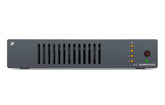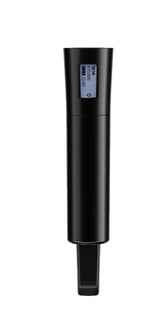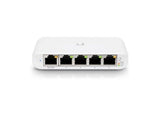Cloud-Based vs. On-Premises Surveillance: Which is Right for You?
Introduction: Is Your Surveillance System Built for the Future?
As video surveillance becomes more critical to business operations, the question of where and how to store and manage footage is more relevant than ever. The choice between cloud-based surveillance and on-premises systems can affect everything from system performance to data security and operational costs.
According to MarketsandMarkets, the global cloud video surveillance market is projected to grow from $2.2 billion in 2022 to $5.4 billion by 2027, reflecting a growing demand for scalable, remotely accessible solutions. But on-prem systems still dominate in industries where compliance, local control, and bandwidth reliability are priorities.
In this article, we’ll break down what each solution offers, the pros and cons, and how to choose the right surveillance approach for your business or property.
Defining Cloud-Based vs. On-Premises Surveillance
Cloud-Based Surveillance
Cloud surveillance systems store video footage and manage operations through an internet-connected platform, usually via a third-party provider. Video from IP cameras is streamed to remote cloud servers where it's recorded, stored, and accessed via apps or browsers.
Key Features:
-
Remote access from anywhere
-
Automated software updates
-
Scalable storage based on subscription plans
-
Often includes AI and video analytics
On-Premises Surveillance
Also known as traditional CCTV or local NVR/DVR systems, on-prem surveillance stores and processes all video data locally on hardware within your physical premises.
Key Features:
-
Local storage (hard drives, NVRs)
-
Direct LAN-based access to footage
-
More control over privacy and security settings
-
Lower recurring costs after installation
Benefits & Use Cases
Cloud-Based Surveillance
1. Scalability Across Locations
Adding cameras and expanding coverage is easier and faster with cloud platforms.
Use Case: A retail chain with 50+ stores deploys cloud-connected cameras, enabling centralized monitoring across all locations from HQ.
2. Remote Access and Management
Users can access live feeds, archived footage, and alerts via mobile apps or web dashboards.
Use Case: A construction site manager checks camera footage remotely on weekends or after hours.
3. Lower Hardware Footprint
Cloud systems reduce the need for onsite servers and bulky NVRs, freeing up physical space and reducing hardware maintenance.
Use Case: A small office installs PoE IP cameras that directly connect to the cloud, avoiding the need for a rack-mounted recorder.
4. Built-In AI and Analytics
Many cloud services include facial recognition, license plate reading, or motion detection tools.
Use Case: A smart warehouse uses cloud-based video analytics to detect unauthorized movement after hours.
On-Premises Surveillance
1. Full Control Over Data and Storage
Organizations maintain physical custody of all footage, offering more control and compliance flexibility.
Use Case: A hospital maintains HIPAA compliance with local-only camera storage.
2. Minimal Bandwidth Usage
Video footage stays within the LAN, reducing the need for constant high-speed internet connectivity.
Use Case: A manufacturing plant in a rural location relies on on-prem NVRs due to limited internet reliability.
3. One-Time Investment, No Recurring Fees
Once installed, on-prem systems have lower ongoing costs than cloud subscriptions.
Use Case: A school system with 200+ cameras avoids monthly cloud fees by deploying centralized NVRs.
4. Greater Customization
Users can customize software, integrate with other local systems, and manage system updates on their own schedule.
Use Case: A casino uses highly customized local VMS with high-frame-rate recordings and retention policies.
Challenges & Considerations
Cloud Surveillance
Dependence on Internet Uptime
Loss of connectivity can affect recording or remote viewing unless cameras support local cache recording.
Tip: Choose cloud systems with edge storage fallback (SD cards or hybrid NVR support).
Recurring Subscription Fees
Long-term costs can exceed on-prem systems, especially for high-resolution or long-retention plans.
Data Sovereignty and Compliance
Some industries require that footage never leave the country or local data center.
Solution: Confirm that your provider offers region-specific data hosting and encryption standards.
On-Prem Surveillance
Hardware Maintenance
You’ll need IT or facilities staff to manage hardware, software patches, and storage backups.
Scalability Limitations
Expanding storage or adding new cameras often requires additional servers or upgrades.
Remote Access Can Be Complex
While possible, secure remote access requires VPNs or firewall adjustments that can be difficult to configure.
How to Choose the Right Surveillance System
Step 1: Evaluate Your Security Goals
-
Do you need 24/7 access on the go?
-
Is long-term storage or compliance the top priority?
-
Are analytics like motion tracking or object detection required?
Step 2: Analyze Infrastructure
-
Is your internet connection fast and reliable?
-
Do you have IT staff to manage onsite servers?
-
Do you have physical space for storage equipment?
Step 3: Determine Budget and Lifecycle Costs
-
Calculate long-term cloud subscription vs. upfront hardware costs
-
Consider upgrades, maintenance, and support plans for both models
Step 4: Consider a Hybrid Solution
Many businesses opt for hybrid surveillance systems, combining local NVRs for core footage and cloud access for remote backup or mobile viewing.
Use Case: A healthcare provider uses on-prem storage for regulatory compliance and a cloud dashboard for executive monitoring.
FAQs
Is cloud surveillance secure?
Yes, when implemented correctly. Look for providers offering end-to-end encryption, MFA, and SOC2/ISO 27001 certifications.
How long can cloud systems store footage?
It varies. Some plans store footage for 7, 30, 90, or 365+ days based on resolution, motion detection settings, and cost tier.
Can I switch from on-prem to cloud later?
Yes. Many modern cameras and VMS platforms support hybrid operation or easy migration to the cloud.
Conclusion: The Right Fit Depends on Your Needs
When comparing cloud-based vs. on-premises surveillance, the best solution depends on your priorities: flexibility, control, cost, scalability, or compliance.
For businesses with multiple locations, strong internet, and limited IT support, cloud systems offer scalability and convenience. For operations with strict compliance needs, high camera counts, or unreliable internet, on-prem systems provide control and long-term cost efficiency.
Need help choosing the right surveillance solution?
Explore our full selection of IP cameras and surveillance systems, networking gear, and AV products at SportsGeekUSA.











